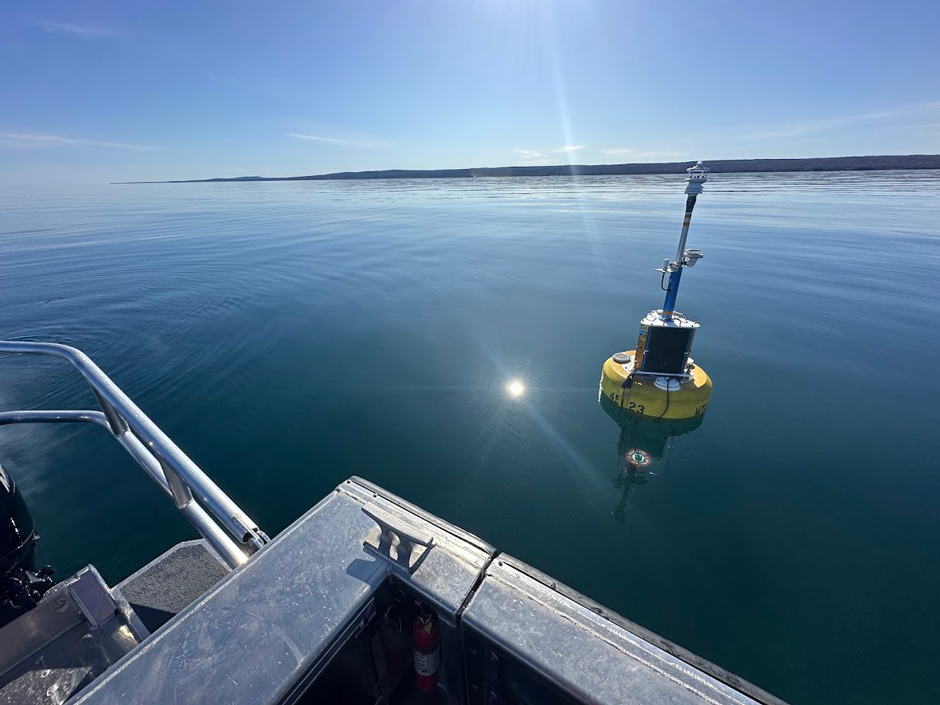Posts for tag "data buoy"
Wave-Powered Buoy Deployed in Puget Sound
While the development of solar-powered monitoring systems has improved access to real-time environmental data, solar power is still limited by low light conditions, such as poor weather, nighttime, or high-latitude environments. To supplement these incumbent power solutions...
- Posted June 23, 2025
Floating Global New Ideas: Buoy-Enabled Research at Florida Agricultural and Mechanical University’s School of the Environment
Florida Agricultural and Mechanical University (FAMU), based in Tallahassee, Florida, is the highest-rated public Historically Black College or University in the United States. FAMU’s School of the Environment (FAMU-SOE) offers BS and BA degrees in Environmental Studies,...
- Posted May 28, 2025
Three Decades of Research at Acton Lake
A multi-disciplinary team at Miami University, Ohio, has been studying the environmental change at Acton Lake for over three decades. Using three different NexSens buoys over this time, the team has an incredible archive of data that...
- Posted May 21, 2025
Great Lakes Research Center: Designing Targeted Monitoring Solutions
According to the National Oceanic and Atmospheric Administration (NOAA), the Great Lakes have more miles of coastline than the contiguous Atlantic and Pacific coasts combined and contain 20 percent of the world’s freshwater, making it a critical...
- Posted March 17, 2025
From Pans to Buoys: Advancing Reservoir Evaporation Rate Monitoring in Texas
In warmer climates like Texas, high reservoir evaporation rates can lead to declines in water level and water availability during droughts, making monitoring essential in order to ensure water security during times of scarcity. According to the...
- Posted February 19, 2025
Have You Heard? AI Buoys Revolutionizing Marine Mammal Monitoring in Whangārei Harbor, New Zealand
In one history, Whangārei Harbor, nestled in the lush hills of New Zealand’s North Island, gets its name from the Māori, “waiting for the breastbone of the whale.” It seems fitting, then, that it’s now home to...
- Posted February 12, 2025
Buoy-Based Solutions: Strengthening Kentucky’s Emergency Response Efforts
When Kentucky’s Emergency Response Team (ERT) has to act quickly in response to chemical and oil spills in the Commonwealth, they rely on small, easily deployable buoys to collect critical data that help minimize and evaluate damages...
- Posted January 6, 2025
Green Water in Green Bay: Using Data Buoys to Monitor the Southern Bay
While the bay of Green Bay has been referred to as the largest freshwater “estuary” in the world, the watershed hosts intensive agriculture and contributes one-third of Lake Michigan’s total phosphorus load. The Fox River flows into...
- Posted November 11, 2024
It’s a Buoy! Highlighting the New NexSens XB-200 Data Buoy
As scientists seek to better understand aquatic ecosystems, utilizing small data buoys to monitor offshore and cover more water is becoming commonplace. The new NexSens Technology XB-200 data buoy was designed for inland and coastal monitoring applications....
- Posted August 26, 2024
Eyes on Ohio Waters: Water Quality Monitoring in the Huntington District
The world of water quality monitoring is vast and diverse, with environmental professionals working in the field in a variety of environments and applications. From watershed monitoring to source water management, a career in water quality provides...
- Posted August 12, 2024
Regional Lake Monitoring in Maine: Community Funded Research and Protection
Lakes everywhere are threatened by climate change, harmful algal blooms, invasive species, and other environmental stressors. Local, regional, and federal agencies have stepped up in order to defend the environment and water resources. The Lakes Environmental Association (LEA) in...
- Posted July 29, 2024
Stone Lab: Cyanobacteria Monitoring in Ohio Lakes
Microcystin, one of several toxins produced by the cyanobacteria that form harmful algal blooms (HABs), has become a popular topic of lake research as the human health impacts of HABs become better understood. Stone Lab is one...
- Posted July 22, 2024
Current Monitoring after the Francis Scott Key Bridge Collapse
On March 26th, according to The Baltimore Sun, a 984-foot, 112,000-ton Dali lost propulsion and collided with a support column of the Francis Scott Key Bridge, collapsing the structure. Soon after the event, search and rescue, salvage...
- Posted June 17, 2024
Protecting Natural Resources: Long-Term Monitoring in Acadia National Park
The United States’ national parks are visited by millions of people each year, providing opportunities to experience the local beauty of the U.S. A core mission of the National Park Service (NPS) is to protect and preserve...
- Posted January 8, 2024
Sustainable Data Collection: Climate Monitoring in the Caribbean
The Caribbean Community Climate Change Centre works to establish environmental monitoring networks and systems in the Caribbean.
- Posted November 20, 2023
Protecting Chicago’s Lakefront: Freshwater Beach Monitoring
Thousands of people flock to the Great Lakes every year to enjoy the freshwater beaches along the coast. As an urban hub with over 2.5 million residents, beachfronts in Chicago have regular visitors as well as tourists...
- Posted November 6, 2023
Remote Water Quality Monitoring with the Oklahoma Water Resources Board
The Oklahoma Water Resource board monitors local waterways in order to ensure federal compliance and protect local ecosystems.
- Posted October 2, 2023
Data-Driven Decisions: Tracking Sediment during the Klamath Dam Removal
The largest dam removal in U.S. history, the deconstruction of the Klamath Dam is slated to begin this summer. The project includes four dams along the Klamath River with the first and smallest dam, Copco #2, scheduled...
- Posted September 25, 2023
Choosing the Right Water Quality Monitoring Systems Is Crucial for Stantec Inc.
Data is king when it comes to water quality monitoring, and Stantec Inc. is committed to providing consistent quality data in real-time.
- Posted September 11, 2023
Buoy Camera Research: Key for Regional Science Consortium
Lake Erie buoy camera data has turned out to be critical for researchers and the public alike. Camera images help give a more complete picture of waves.
- Posted March 28, 2022






















